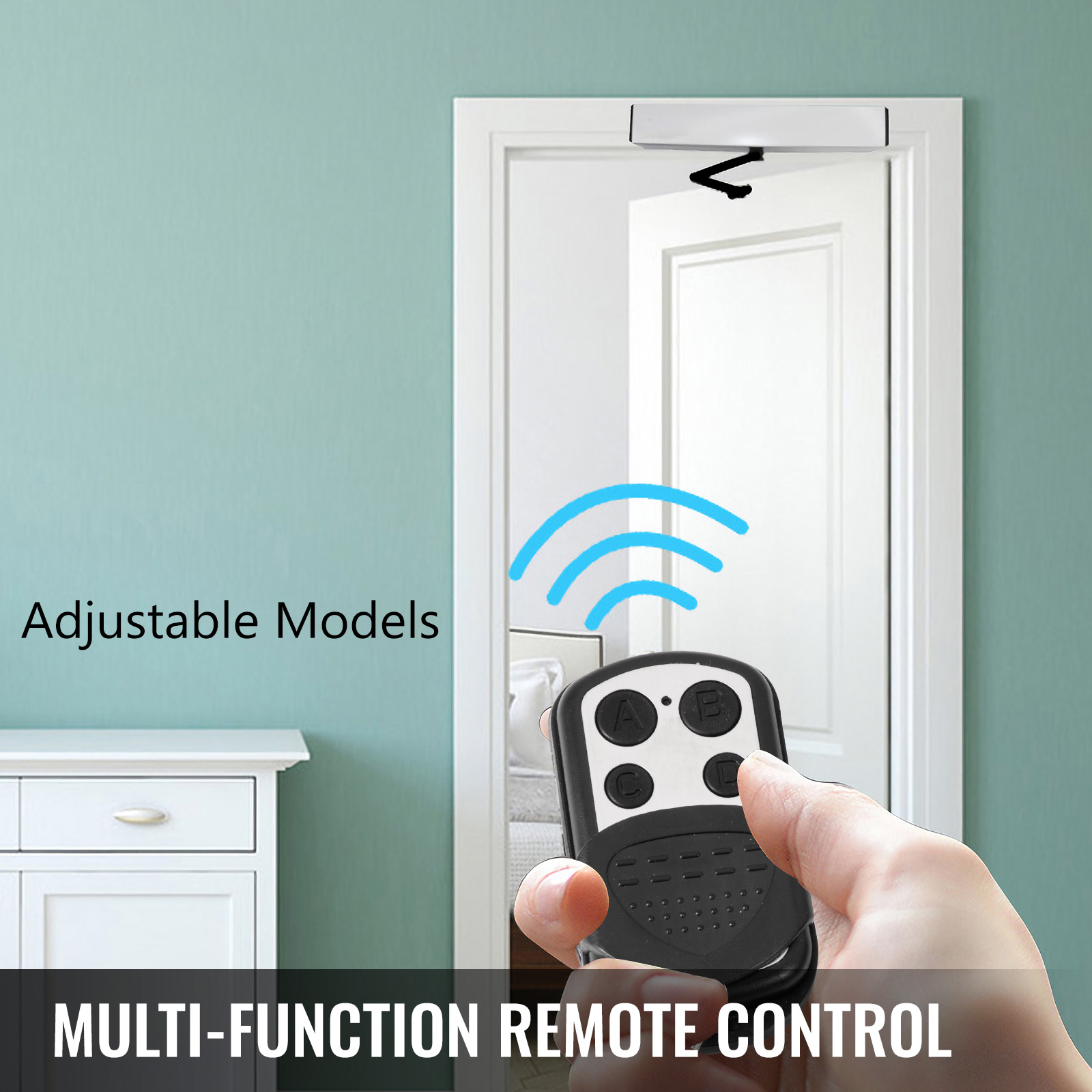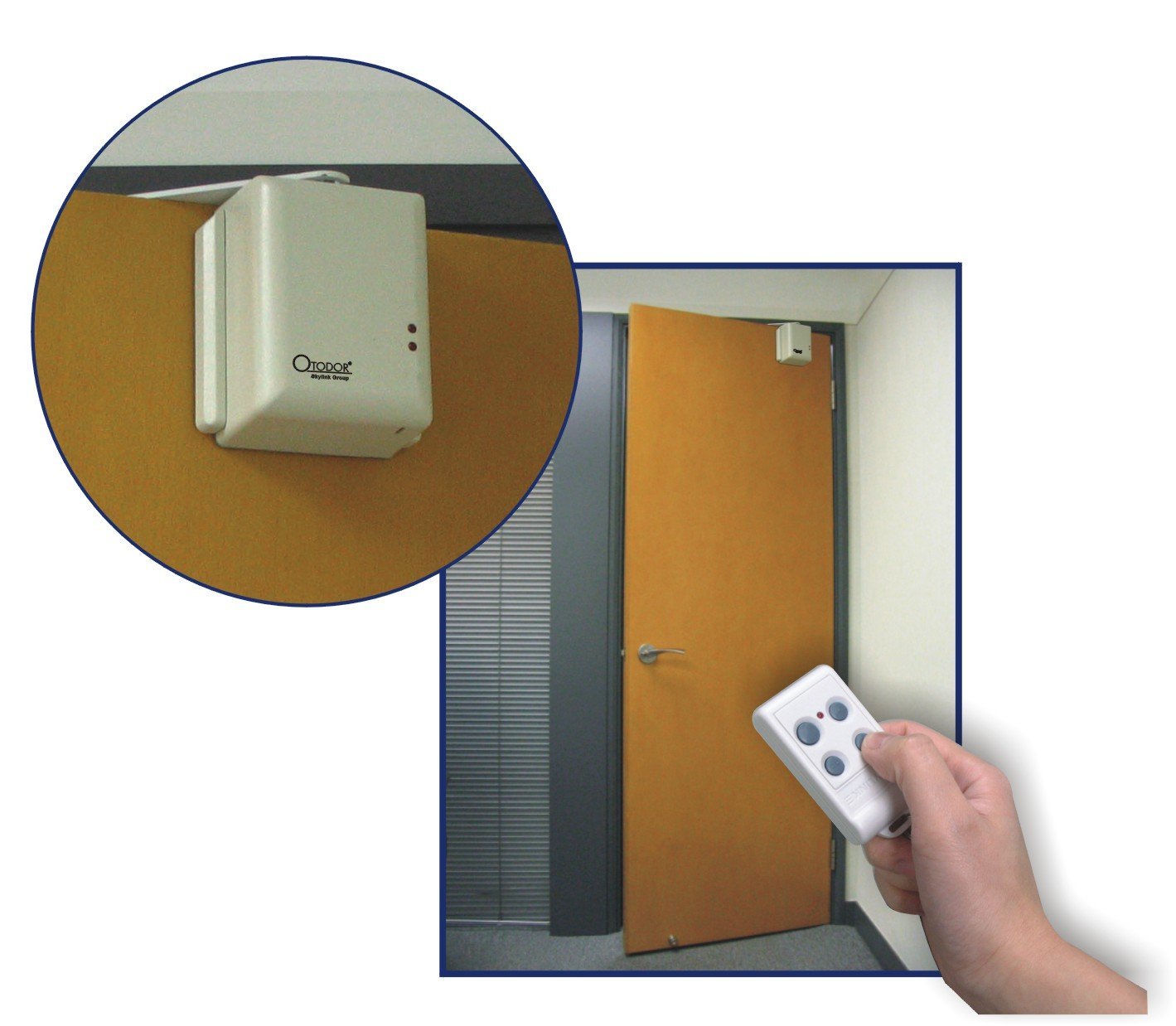Product Overview and Features

Automatic cabinet door openers are convenient mechanisms designed to effortlessly open and, in some cases, close cabinet doors. They eliminate the need for manual operation, offering accessibility and a touch of modern convenience to kitchens, bathrooms, and other areas where cabinets are used. This technology is particularly beneficial for individuals with limited mobility or those seeking a more streamlined kitchen experience.
Automatic cabinet door openers use a variety of mechanisms to achieve their function. Understanding these differences is key to selecting the right system for your needs.
Types of Automatic Cabinet Door Openers
The primary types of automatic cabinet door openers differ mainly in their power source and actuation method. Electric openers utilize small electric motors to power a system of gears and linkages, providing a smooth and relatively quiet operation. Pneumatic openers, on the other hand, use compressed air to drive a piston, creating a more forceful opening action, often favored for heavier cabinet doors. While less common, some systems incorporate hydraulics or even spring-loaded mechanisms for a more simplistic approach. Electric systems generally offer greater control and quieter operation, while pneumatic systems might be preferred for their raw power and potential for faster opening speeds.
Key Features and Benefits Across Various Settings, Automatic cabinet door opener
Automatic cabinet door openers offer several key benefits depending on the location and application. In kitchens, they provide easy access to frequently used items, reducing strain and improving workflow. This is especially helpful for individuals with mobility challenges or those who prefer hands-free operation while cooking. The ease of access also makes them suitable for pantries and areas with frequently used supplies. In bathrooms, these openers enhance accessibility, making cabinets easier to open for those with limited dexterity or reach. The reduced need for physical interaction also contributes to improved hygiene. They are especially useful for medicine cabinets where quick access might be crucial.
Comparison of Automatic Cabinet Door Opener Models
The following table compares four hypothetical models of automatic cabinet door openers, highlighting their price, features, and power source. Note that these are example models and actual pricing and features will vary depending on the manufacturer and specific model.
| Model | Price (USD) | Features | Power Source |
|---|---|---|---|
| EasyOpen 100 | $50 | Electric, simple push-to-open, single door operation | Battery (AA) |
| SmartCabinet 200 | $100 | Electric, touchless sensor, dual door operation, adjustable speed | AC adapter |
| PowerLift 300 | $150 | Pneumatic, heavy-duty, single or dual door operation, adjustable opening force | Compressed air tank |
| SilentSlide 400 | $200 | Electric, near-silent operation, soft-close mechanism, smartphone app control | Rechargeable lithium-ion battery |
Installation and Usage: Automatic Cabinet Door Opener
Getting your automatic cabinet door opener installed and running smoothly is easier than you might think. This section will guide you through the process, from initial placement to troubleshooting any minor hiccups. We’ll cover everything you need to know for a successful installation and years of effortless cabinet access.
Step-by-Step Installation
The installation process is straightforward and usually takes less than 30 minutes. However, always consult your specific model’s instruction manual for detailed diagrams and any model-specific instructions. These steps provide a general guideline.
- Prepare the Cabinet: Ensure the cabinet door is clean and free of obstructions. Check that the door hinges are in good working order and the door closes smoothly and completely.
- Position the Opener: Carefully position the automatic opener unit on the inside of the cabinet door, ensuring it’s level and centered. The exact placement will depend on the specific opener model and the cabinet door’s design. Refer to the visual guide below for optimal placement.
- Attach the Opener: Securely attach the opener to the cabinet door using the provided mounting hardware. Ensure the screws are firmly tightened to prevent the unit from shifting during operation.
- Connect the Power Source: Connect the opener to a suitable power source (usually batteries or a low-voltage power supply). Make sure the connections are secure and follow the manufacturer’s instructions precisely.
- Test and Adjust: Test the opener by gently opening and closing the cabinet door. Adjust the sensitivity and opening/closing speed settings (detailed below) until you achieve the desired performance.
Maintaining and Troubleshooting
Regular maintenance is key to ensuring your automatic cabinet door opener continues to function flawlessly. Ignoring small issues can lead to more significant problems down the line.
- Regular Cleaning: Periodically clean the opener unit with a soft, damp cloth to remove dust and debris. Avoid using harsh chemicals or abrasive cleaners.
- Battery Check (if applicable): If your opener uses batteries, check their charge regularly and replace them as needed. Low battery power can lead to erratic operation or complete failure.
- Sensor Check: Ensure the opener’s sensors are clean and unobstructed. Dust or debris can interfere with their function, leading to inaccurate triggering.
- Troubleshooting Slow Opening/Closing: If the door opens or closes slowly, check for obstructions or adjust the speed settings as detailed below. Low battery power (if applicable) could also be a factor.
- Troubleshooting Non-Response: If the opener fails to respond, check the power source and ensure the batteries are charged or the power supply is working correctly. Inspect the sensors for obstructions.
Visual Guide for Placement and Alignment
Imagine the inside of your cabinet door. The automatic opener, typically a small rectangular unit, should be positioned centrally towards the top edge of the door, slightly offset from the hinge side. This allows for unobstructed movement of the door while keeping the opener out of the way. The sensor, usually a small, almost invisible component, should be aligned with the opening mechanism to accurately detect the door’s position. Avoid placing the opener near the hinges, as this can hinder its operation and potentially damage the unit. A slightly angled placement, with the opener leaning slightly away from the hinges, can sometimes improve performance.
Adjusting Sensitivity and Speed
Most automatic cabinet door openers have adjustable settings for sensitivity and opening/closing speed. These settings allow you to customize the opener’s behavior to match your preferences and the specific characteristics of your cabinet door.
To adjust the sensitivity, locate the sensitivity control (often a small dial or switch). A higher sensitivity means the opener will respond to even slight movements of the door, while a lower sensitivity requires a more forceful push or pull to activate it. Experiment with different settings to find the optimal balance between responsiveness and preventing accidental triggering.
To adjust the opening/closing speed, locate the speed control (often a separate dial or switch). This allows you to control how quickly the door opens and closes. A slower speed may be preferable for delicate cabinet contents, while a faster speed is suitable for frequent use. Again, experiment to find your preferred speed setting. Always refer to your specific model’s instruction manual for detailed instructions on adjusting these settings.
Applications and Market Analysis

Automatic cabinet door openers represent a burgeoning market with applications spanning various sectors. Their convenience and potential for improved accessibility make them attractive to a wide range of consumers and businesses, though the specific needs and priorities of each group differ significantly.
The target market for these openers is diverse. Homeowners, particularly those with mobility limitations or a desire for enhanced kitchen efficiency, represent a significant segment. Businesses, especially in the hospitality and healthcare industries, also stand to benefit from the increased hygiene and ease of use these systems provide. Beyond these primary markets, specialized applications exist in sectors like laboratories and cleanrooms where minimizing contamination is paramount.
Target Market Segmentation
The primary target markets can be further broken down. Within the homeowner market, we see strong interest among aging populations seeking to maintain independence and among individuals with physical disabilities. For businesses, the hospitality sector (hotels, restaurants) values the improved hygiene and streamlined service, while healthcare facilities (hospitals, nursing homes) benefit from reduced cross-contamination risks. Finally, specialized industries like laboratories require controlled environments, making automatic doors an essential component of their safety protocols. Market research suggests that the demand for these openers is likely to increase significantly in the coming years, driven by demographic shifts and evolving expectations regarding accessibility and hygiene.
Applications Across Sectors
Automatic cabinet door openers find versatile applications. In healthcare settings, they reduce the risk of cross-contamination by eliminating the need for manual handling of cabinet doors. Imagine a sterile environment in an operating room or a pharmaceutical lab – the automatic opening prevents the spread of bacteria or airborne particles. In hospitality, they enhance the overall customer experience by offering a touchless, convenient way to access supplies, thereby improving service speed and efficiency. Picture a busy restaurant kitchen where staff can access frequently used ingredients without interrupting their workflow. In residential settings, they provide convenience and accessibility for individuals with limited mobility, making daily tasks easier. Consider a homeowner with arthritis who struggles with traditional cabinet doors – an automatic system would significantly improve their quality of life.
Advantages and Disadvantages Compared to Traditional Cabinet Doors
Automatic cabinet door openers offer several key advantages over traditional doors. They enhance hygiene by minimizing physical contact, improve accessibility for individuals with disabilities, and boost efficiency in commercial settings. However, the initial cost of installation can be higher than that of traditional doors, and there’s a reliance on power; malfunctions could disrupt operations. Maintenance is also a factor to consider. Traditional cabinet doors, while less expensive initially, lack the hygiene benefits and accessibility features offered by their automatic counterparts. They also require manual operation, which can be inefficient and impractical in high-traffic areas. The choice between automatic and traditional systems depends heavily on the specific needs and priorities of the user or business.
